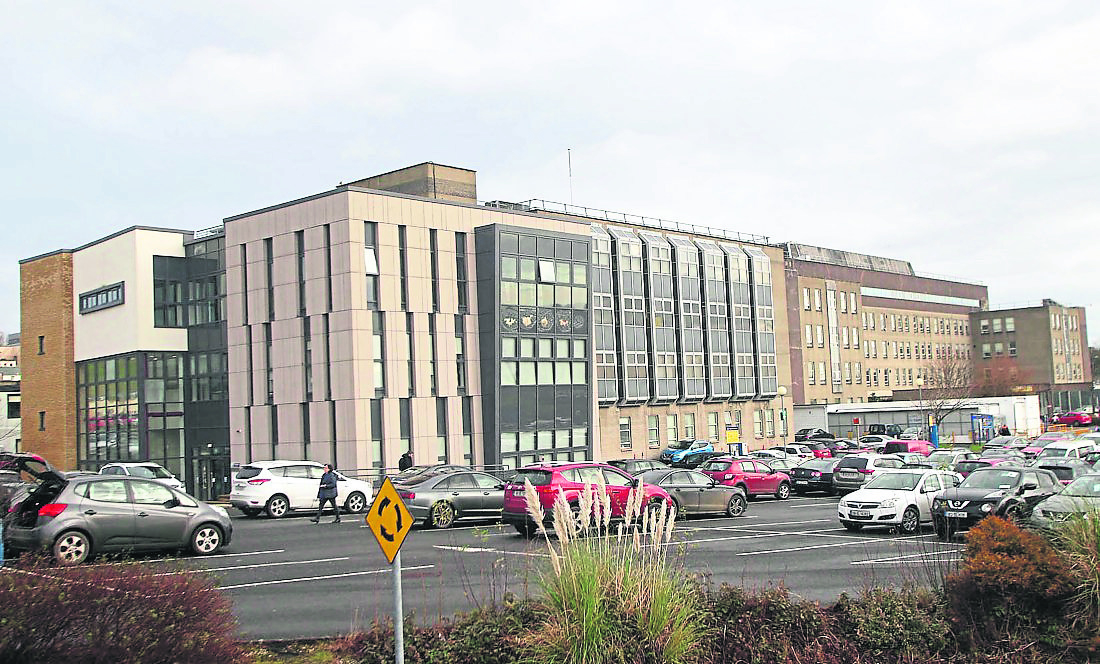by Darragh Bermingham
SURGE protocol measures, introduced when hospitals are experiencing high emergency activity, were implemented 242 times at Letterkenny University Hospital during a 15 month period.
According to the HSE Urgent and Emergency Care (UEC) Operational Plan, published in July last year, surge measures respond to and mitigate patient safety risks associated with high UEC activity and congestion.
Surge measures can include, but are not restricted to, extending GP out of hours periods and creating additional capacity through voluntary and private ambulance services to encourage “hospital avoidance”.
When that avoidance is impossible, measures can also include utilising contracted private hospital bed capacity, rostering additional and extended hours for staff “integral to patient flow” and health and social care professionals across acute and community services, and the transfer of patients awaiting Nursing Home Support Scheme funding or those requiring convalescent care to nursing home beds.
It also allows for additional community private capacity to be stepped up if all available community bed capacity has been maximised.
Information obtained under the Freedom of Information Act revealed that, in hospitals across Ireland, surge protocol measures were implemented at Letterkenny on 193 occasions in 2023 and a further 49 in Q1 of 2024.
A spokesperson for the HSE said the full capacity protocol is enacted when a key set of performance metrics are exceeded in an overcrowded ED that leads to clear triggers and actions to ensure the triage of patients presenting to ED is in line with best practice; that patients are reviewed with subsequent treatment commencement and; the placement (bed accommodation) of patients is timely and generally appropriate.
“The protocol identifies clear points of escalation of risk aligned with clear governance and responsibility for risk mitigating actions.
“There have been improvements in urgent and emergency care in 2024 despite an increase in attendance of 9.6 per cent compared with 2023 year to date,” the spokesperson added, “with a 13.7 per cent increase in attendance by those aged 75 and over.
“There has been a reduction in the number of delayed transfers of care in hospitals – 391 cases which equals a reduction of 18.7 per cent compared with the same week last year; the average number of patients waiting on trolleys is 315 which is down 11.2 per cent compared to last year; and also there have been improvements in the patient experience time for older people where there is a particular focus to ensure that patients over 75 are not waiting for a bed for more than 24 hours.”
The figures above are from the week ending July 7 this year.
“Hospital and community teams work closely to enable patients to move as quickly as possible through the hospital system, to improve the experience of patients in the ED and provide supports for patients to keep them well and out of hospital,” the HSE spokesperson continued.
“As part of the urgent and emergency care plan, patient flow and discharge coordinators are available at weekends to ensure all available bed capacity across sites are used, community Intervention team services have been expanded and there are additional staff across a number of disciplines, including triage staff, in certain areas.
“Other areas of focus include maximising discharges to reduce delayed transfers of care, increasing access to diagnostics and investigations to optimise patient flow within the hospitals and supporting the patient journey through the hospital to home or to a step down or long term care facility as quickly as possible after completing treatment.
“All patients who present to emergency departments are seen and treated, with the sickest and most urgent patients being prioritised,” he stated further.
“We urge any patient requiring emergency hospital treatment not to delay and come to the ED, or dial 999 or 112 in an emergency.”
The spokesperson said the HSE acknowledges that patients presenting with non-urgent injuries may face longer waiting times, depending on the number of patients attending and the severity of patient illnesses.
“Our staff work hard to do all they can to reduce the length of time patients wait in EDs and we apologise when patients experience long delays.”
The HSE asked patients to consider other options, such as GPs, out of hours services, pharmacies and injury units, if they do not require emergency care.










